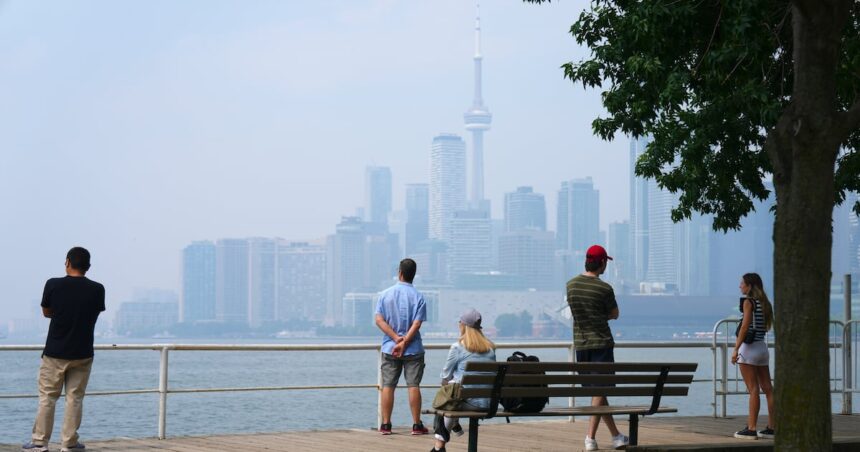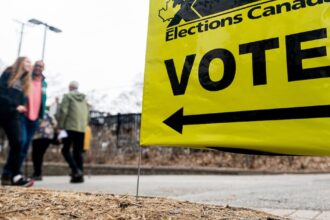Residents across Toronto woke to an eerie orange-tinted sky this morning as smoke from distant forest fires descended upon Canada’s largest city, prompting health officials to issue an immediate air quality advisory. The fine particulate matter hanging visibly in the air serves as a stark reminder that even urban centers hundreds of kilometers from active wildfires remain vulnerable to their far-reaching environmental impacts.
Environment Canada’s Air Quality Health Index has reached 7 out of 10 for the Greater Toronto Area, placing it in the “high risk” category that demands precautionary measures from the public, particularly those with respiratory conditions. Dr. Sarah Jennings, Toronto’s Associate Medical Officer of Health, described the situation as “concerning but manageable with proper precautions.”
“The microscopic particles present in wildfire smoke can penetrate deep into the lungs,” explained Dr. Jennings during an emergency briefing this morning. “For vulnerable populations including children, the elderly, pregnant women, and those with pre-existing heart or lung conditions, today’s exposure levels represent a significant health risk.”
The smoke originated from active forest fires in northern Ontario and Quebec, where unusually dry conditions have created perfect conditions for wildfire propagation. Meteorological data indicates that specific wind patterns have channeled the smoke directly toward the Toronto metropolitan area, creating conditions rarely seen at this intensity in the city.
Toronto Fire Services has reported a 35% increase in respiratory-related emergency calls since yesterday evening, though hospitals have not yet seen a corresponding surge in admissions. “We’re monitoring the situation closely,” noted James Liu, spokesperson for Toronto’s Emergency Management Office. “Our primary concern is preventing exacerbations of conditions like asthma and COPD.”
City officials have activated cooling centers as temporary clean air shelters, equipped with industrial-grade air filtration systems. These locations, typically used during extreme heat events, have been rapidly repurposed to offer respite from the smoky conditions, particularly for those without home air conditioning or filtration systems.
The Toronto Transit Commission has implemented specialized air filtration protocols on all subway platforms and inside vehicles to minimize passenger exposure. However, outdoor workers face challenging conditions with limited protection options. Construction sites across the city have implemented rotation schedules to minimize individual workers’ exposure time.
Environmental scientists from the University of Toronto are using this rare event to gather valuable air quality data. “The intensity and composition of particulate matter during these smoke events provides critical information about how wildfire impacts travel and transform over distance,” said Dr. Elena Rodriguez, environmental engineering professor specializing in atmospheric pollutants.
The air quality advisory is expected to remain in effect for at least 48 hours, though meteorological forecasts indicate potential improvement as a cold front approaches from the northwest. Until then, health authorities recommend residents limit outdoor activities, keep windows closed, and use HEPA air purifiers if available.
This event marks the third significant smoke event to affect Toronto this year, raising questions about whether these once-rare occurrences are becoming the new normal for Canada’s urban centers. As climate change continues to intensify wildfire seasons across North America, will our infrastructure and health systems evolve quickly enough to address this emerging public health challenge?










